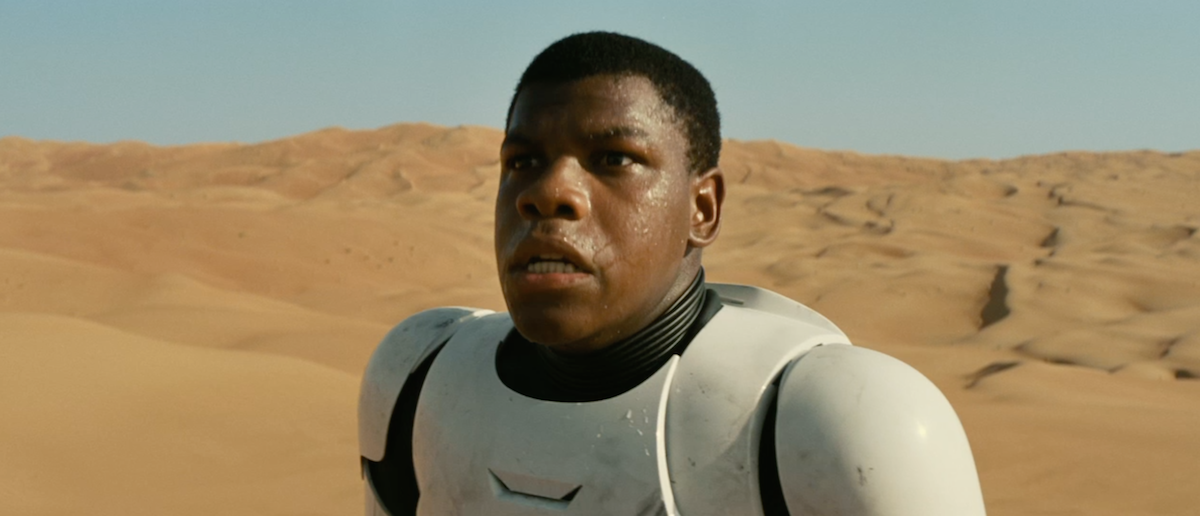Why John Boyega’s starring role in “Star Wars: The Force Awakens” will be so important.
It was announced a couple of years ago, shortly after Lucasfilm was officially sold to Disney, that there were going to be new Star Wars films on the way. As the months passed, actors, writers, and directors were announced. While we were all excited about the return of Luke, Leia, Han Solo, Chewbacca and everyone’s favorite ‘droids — R2D2 and C3PO — not everyone was entirely on board with J.J. Abrams being brought on to the project. At the time, the movie seemed like it was a long ways away, and something that we shouldn’t get excited for just yet.
Then, in November 2014, on the day after Thanksgiving, a teaser trailer was released. In the trailer we see the usual trappings of a Star Wars film, as well as as new characters, and even a little round and rolling ‘droid by the name of BB-8. The trailer brought a lot of excitement to some, but a certain segment of people were upset. Why? Because of the appearance of actor John Boyega in a Stormtrooper costume. Apparently, they believed very fervently that Stormtroopers are supposed to be White.
(Editor’s nerdly note: Canonically, within the movies, Stormtroopers do not have a defined skin color or origin and are never seen without their helmets on. There is no reason to believe they were all White. Their predecessors in the clone troopers of the Grand Army of the Republic were all clones of Jango Fett, played in the films by part-Maori actor Temuera Morrison.)
On April 16th, the second teaser trailer for the movie was released, and John Boyega is again seen in the Stormtrooper armor, as well as in regular clothing and looks to be one of the lead characters in the film. It is still unknown whether or not his character is actually a Stormtrooper or in some kind of disguise (like Luke Skywalker and Han Solo in the original “Star Wars” film from 1977).
Why is this exciting? Because the Star Wars films, despite being diverse in their supporting or background casting, have yet to show as much diversity in casting their main characters. Although characters like Mace Windu and Lando Calrissian are iconic and have interesting backstories on their own (if you have time to read all of those books), none of the Star Wars films can even pass the first rule of the Racial Bechdel test. That test being: It has to have two People of Color in it, who talk to each other, not about White people.
While casting John Boyega as a main character alone doesn’t fix the issue automatically, it is a great starting point. Main characters in movies have character growth, personal histories, and, most importantly, storylines that are about them. Those backgrounds generally also imply other People of Color, who can potentially be introduced as well. John Boyega’s character therefore likely means interaction with other POC side-characters, who potentially focus on something other than the usual white protagonists you see so often in films. Especially in Sci-Fi.
This also isn’t the first time this specific actor has starred in a sci-fi role. Many people will remember John Boyega as the critically-acclaimed breakout star of the 2011 film Attack the Block.
That film was much less Space Opera than the Star Wars franchise and instead deals with a group of teenagers from the slums fighting off an alien invasion. That film also has not one but three main characters of color, and a diverse enough background cast that it passes the Racial Bechdel test on multiple occasions with flying colors. Aside from that, John Boyega’s performance as that main character Moses is compelling. He’s the type of anti-hero that many other gritty movies hope to portray.
Read more






